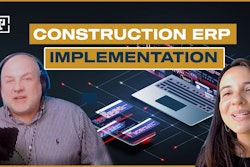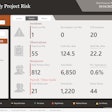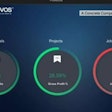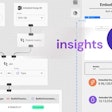
When I debriefed Briq CEO Bassem Hamdy, it was at the Advancing Construction Analytics conference in Denver in May of 2022. Most of the proceedings at that event focused on nascent efforts of contractors to build out their own home-baked analytics applications.
Hamdy, however, sees his company’s mission to provide the more direct route to success and guaranteed longevity that packaged software offers.
“Contractors are still in a learning curve,” Hamdy said. “Some of these analytics initiatives started five to six years ago, and some continue to evolve. In some cases, they may have built something that is great, but it will be replaced with something that is now a standard, like Briq. The difference between Briq and making something internally is that the internal product does not have to work all the time. When you provide a product, it has to work all the time. That is why venture capitalists invest in this.
Briq, thanks to a compelling use case for construction analytics and Hamdy’s lineage as CEO of project-based enterprise resource planning (ERP) company CMIC, has done very well raising venture cash. Between two seed rounds in 2019, A series A round in 2020 and a Series B round in 2021, the company has garnered $46 million in venture funding. Since its founding in 2018, the company has become a leading financial automation platform for contractors. Briq automates financial workflows by connecting the people, processes, and systems that contractors use to run their business.
Briq delivers tools to improve visibility and control while automating critical construction finance tasks:
WIP Automation to turn data on work in progress into custom reports and analytics
Corporate Planning and Management for forecasting and profit gain/fade analysis
Cash Flow Analysis and Forecasting with scenario analysis and real time views of your cash position
Headcount Planning to avoid over- or under-staffing
Revenue Forecasting to make predictions from past performance
Equipment Materials and Planning for current and upcoming jobs
Project Budgeting and Forecasting based on real-time and past project performance
AP Invoice and Spend Management to automate data collection from documents, saving staff time and minimizing errors
At the time of our briefing, the company employed about 200 and was looking to hire 10 additional positions, with a healthy focus on areas of interest to net new customers including customer success.
Construction Data Standardization
From products like Quickbase to integration platform-as-a-service (IPaaS) vendors like Ryvit, contractors are looking at any number of options to bring data from different products they use and those used by project partners into a single platform. This requires a certain amount of data cleansing and standardization. It also often involves at least some systems integration work. Briq, however, includes no-code integration creation tools enabling data from disparate datasets like project management systems, enterprise resource planning (ERP) software, time clocks, customer relationship management (CRM) and pipeline management software and accounts payable/accounts receivable applications to be easily aggregated. But this still requires an analyst layer in the company who can conceive of ways to mash up data together to solve specific problems.
“In some of our larger general contractor customers, there is a data analyst or data science team,” Hamdy said. “If this is the case, they still gain value because we empower their IT team to not have to build these integrations. Or we empower our customers with help from our own internal data analysts to help them get the most out of the platform.”
But most customers opt for a self-service approach, setting up their own processes to pull the data from various sources. Customers have gained enough data agility using the no-code integration features in Briq that they according to Hamdy have been able to move off an IPaaS applications from Dell Boomi. Other customers abandoned internal projects built in Apache or standard products from Alterix.
In the months and years to come, Briq customers can expect more standard integrations that increase their ability to structure event-driven architectures across different construction software products. Also slated are additional standard data transformation tools, augmenting about 100 standard tools already in the Briq arsenal, including existing tools for data stacking, unnesting of dat. Expected this year is an inference engine that infers the type of data users are working with, parsing date formats, measurements that may not be represented consistently from one system to the next.
Briq Tech Stack
Briq is a multi-tenant software-as-a-service (SaaS) product on the Google Cloud platform. Briq has put a great deal of thought and planning into redundancy and failover in the cloud—they run two instances side by side in production, and can even redirect to another cloud using Terraform scripts.
In order to deliver on broad and robust functionality while providing a rich user experience, Briq relies on an extensive list of open source technologies including:
BigQuery, Firebase, Postgres and Mongo databases
Elasticsearch, Kibana, Prometheus, Grafana, and VPC Flow logs for monitoring and alerting
Google PubSub and Redis for queue management
GCP Load balancers, CDN and Nginx for networking purposes and to distribute compute demand across multiple instances
Open source technologies like these help accelerate the delivery of cloud applications but do create an additional level of risk of failure and hacking. Briq has the bandwidth and continuous audit processes in place to ensure all of their open source tech as well as their proprietary technologies are secure. New product is shipped frequently—on a two-week cadence according to Briq Product Marketing Director Sue Ceglia, with customers participating in betas and receiving advance information on significant new functionality.
An analytics or financial automation package needs deep hooks into other applications used in the business and among trading partners. And here, Briq delivers a growing arsenal of standard integrations with products ranging from Sage 300 Construction and Real Estate, Viewpoint, Procontractor, Microsoft Dynamics GP, CMiC, Procore, Spectrum, Accubid, Plexxis, Microsoft Access, Foundation, Quickbooks (QODBC), Cosential, Acumatica and others.
One thing that differentiates Briq’s tech stack from some others is the fact that this is an extract, load, transform (ELT) application rather than an extract, transform, load (ETL) application. This is important for a few reasons—mainly because the cloud is a better and more efficient place than a traditional data warehouse to do the transformation required to make data from one application useable by another. Within the Briq platform, users can leverage a no-code interfact that enables them to access data from different data sets, filter data and join data based on keys in a variety of different ways.
An ELT application like Briq can leverage features of a cloud platform that deliver elasticity and size capacity dynamically as needed so the application can handle multiple jobs at once without impacting performance. ETL will become more and more attractive particularly as contractors are pulling data from more and more disparate sources which may create complexity hard for an ETL application to deal with.
Market and Pricing
Hamdy said the company was finding the best fit with general contractors and a few owners. Generals starting at about $25 million in revenue and up were a fit, but according to Briq Vice President of Marketing and Communications Doug Madey, what matters is not the size of the revenue as much as the size of the contractor’s ambitions.
“The main thing is they should be growing, and over $20 million,” Madey said. “But the reason you implement Briq is so you can make better decisions based on growth factors. Do you take on another job, or hire more people—it is easier to make those calls with some confidence in your cash flow.”
Madey said large specialty contractors are customers, as are generals and some project owners.
“We find generals are looking for more transparency and accuracy,” Hamdy said. “We are being asked to integrate with other tools—we are hearing interest in integration with e-builder among owners. We get asked to integrate with Plangrid, Autodesk Construction Cloud—and we see both contractors and owners using Autodesk Construction Cloud. We see a lot of people using Procore of course. So what everybody is excited about is the portability. If you run a project in Procore and tomorrow run one in Autodesk Construction Cloud, how can you have all of that data in one place and use it without standing up a massive data platform?”
The value quotient for Briq is high in part due to its ELT model, which means it loads raw data from other systems—which can conform to a variety of formats and data structures—rather than transforming the data to a suitable format before it enters Briq. So Briq users get access to the data in its original form, which then enables it to be used in more different ways than if it was transformed prior to entering the application environment.
“Being an ELT platform, we allow data to come in from whatever system our customers are using, into one place and then do the transformations you want to do to the data,” Hamdy said. “Other people write a lot of code to extract and transform at the same time.”
Apart from the financial automation and analytical features, this means Briq can also drive value as an integration platform, which it will compete not just with analytic tools with a variety of other integration tools ranging from Ryvit IPaaS to Toric.
Briq uses a number of different pricing models, ranging from pricing per integration, through an enterprise-wide agreement or by the project. According to Hamdy the footprint in many companies grows incrementally, starting with two integrations and expanding to six or even 10.
BOTTOM LINE: Briq is on a growth trajectory driven by multiple advantages in the marketplace—an experienced management team, robust venture capital funding and a technology stack that inspires confidence in performance today and stability well into the future. An application aimed at financial processes and visibility must be informed by multiple systems of record, and Briq handles this admirably with its ELT architecture. While contractors or even owners may create their own traditional data lakes, those stand-alone tools will not contain the metadata and chain of custody information on each data point that Briq will, making data more usable thanks to the provision of context. What could be a source of both confidence and concern for companies considering Briq is that the company may undertake acquisitions to accelerate past the rate of organic growth. It is often less disruptive to be the customer of a software company that acquires another as opposed to the one that is acquired because the new owner may raze the organizational structure, fail to invest in development and evolution of the acquired product or try to migrate customers onto a different product. Briq is more likely the acquirer than the acquiree, but prospects should still ask for any insights on the company’s acquisition strategy and development roadmap in general to avoid, for instance, making other investments that would be duplicative of new functionality coming down the pike.















